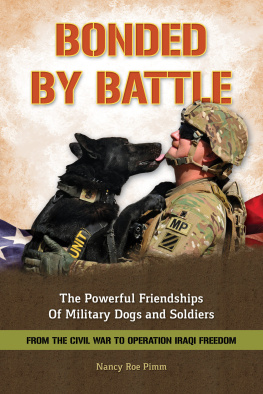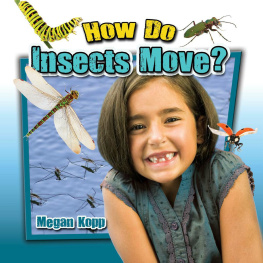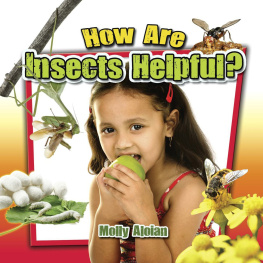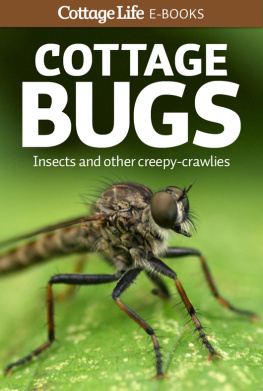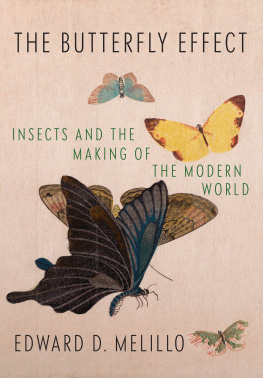This book is the result of four years of reading, research, conversations, interviews, and writing. Although I have many people to thank for their assistance, none of the acknowledgments should be interpreted as meaning that these individuals, their agencies, or their institutions agree with any of the claims made in this book.
I should begin by thanking those at my own institution, the University of Wyoming, who lent their expertise to the project, including colleagues in the entomology section of the Department of Renewable Resources: Alex Latchininsky, Jack Lloyd, Scott Shaw, and Scott Schell. I am also indebted to Mark Byra (Division of Kinesiology and Health), Paul Flesher (Religious Studies Program), and Tim Kearley (College of Law) for their willingness to share their time and knowledge. The University of Wyoming's Legal Office (Rod Lang) and the university's reference librarians were instrumental in my efforts. And finally I am truly compelled to thank a cadre of individuals who proved that, contrary to a near-consensus among faculty, effective administrators can authentically facilitate and truly support scholarship: Harvey Hix (MFA program in Creative Writing), Ed Sherline (Department of Philosophy), and Tom Thurow (Department of Renewable Resources).
I would like to thank an array of academic colleagues at other institutions for taking the time to respond to my queries with information, images, and sometimes polite declinations. These first-rate scholars include: John Abbott (University of Texas), David Block, Petrina Jackson, and William Maddison (Cornell University), Chuck Bomar (University of Wisconsin, Stout), Jerry Bromenshenk (University of Montana), Michael Burgett (Oregon State University), John Capinera (University of Florida), Jim Carey and John Skarstad (University of California, Davis), Thomas Daniel (University of Washington), Ron Fearing (University of California, Berkeley), Alan Ferg and Roger Myers (University of Arizona), Phillip Greenfeld (South Dakota State University), Garnet Hertz (University of California, Irvine), Barrett Klein (University of Texas), Gene Kritksy (College of Mount St. Joseph), Joseph LaForest (University of Georgia), Bill Lewinger and Roger Quinn (Case Western Reserve University), Harley Moon (Iowa State University), Bob Peterson and Joe Shaw (Montana State University), Alejandro Ramirez-Serrano (University of Calgary), Cliff Sadof (Purdue University), Panos Seranis (University of Cambridge), Victoria Smith (University of Nebraska), Robert Wood (Harvard University), and Raymond Zilinskas (James Martin Center for Nonproliferation Studies).
Although it is de rigueur to denigrate the efficiency and competency of government employees, my experience was that our agencies include some remarkably intelligent and effective people. The research for this project was greatly facilitated by wide-ranging discussions and e-mail exchanges with extraordinarily competent, helpful, and perceptive individuals in the U.S. Department of Agriculture's Agricultural Research Service (Dave Carlson, Sharon Drumm, Tim Gottwald, Eric Jang, Edward Knipling, Peter J. Landolt, Richard Nunamaker, Norma Ross, Alan Showler, John Sivinski, Nancy Vanatta, and Robert Vander Meer), the USDA's Animal and Plant Health Inspection Service (Melissa O'Dell, Jim Reynolds, Matt Royer, and Bruce Shambaugh), Office of Inspector General (Tim Danaher), and the FOIA Staff.
Individuals in other state and federal agencies also provided assistance in a variety of forms. These people included: Jeffrey Grode (U.S. Customs and Border Protection), James Hinchman (National Academy of Sciences), Dennis A. LaPointe (U.S. Geological Survey), Wilbert Mahoney (National Archives and Records Administration), Robin Schoen (National Research Council), Sarah Maxwell and David West (U.S. Army), Janie Santos (U.S. Air Force), Janine Anderson and Mary Ann Showalter (U.S. Department of Energy), Erlinda Byrd (Department of Homeland Security), and Pat Minyard, Cliff Ramos, and Jim Wiseman (California Department of Food and Agriculture).
A number of private individuals (Eric Bredesen, Galen Frysinger, Tim Hale, Ailsa Hopkin, Ethan Lockwood, Walter Mller, Tom Murray, Matthias Ziegler, and Ari Zivotofsky) and people from various organizations were kind enough to further my efforts with everything from intriguing images to valuable leads to critical information, including Susan Bennett and John Moffett (Needham Research Institute), Naima Boumaiza (UNESCO), Jocelyne Bruyre and Lisa Schwarb (World Health Organization), Ginger Cisewski (USGenNet.org), Nancy Farrell (WGBH, Boston), Mike Frosch (civil-war.net), Wilfried Funk (insektenbox.de), Matthias Gabriel (Zuschauerredaktion), Dan Gower (DUSTOFF Association), Arvel "Jim" Hall and Stephanie Simon (Disabled American Veterans), Emily Hall (Emerald Group Publishing Limited), Edward Hammond and Jan van Aken (Sunshine Project), Peter Hicks (Napoleon Foundation), Kate Jackson (MiniMonsters, UK), Jeff Leys (Voices for Creative Nonviolence), Grant Lockwood (Sandia National Laboratories), Nazeem Lowe (Iziko Museums of Cape Town), Malick Kane (Getty Images), Sharlissa Moore (Student Pugwash USA), Nicole Neitzey (Mine Action Information Center), Ed Rouse (psywarrior.com), Leigh Russo (PARS International), Vincent Smith (Natural History Museum, London), Jane Stevenson (Bristol Friends of the Earth), Joan Taylor (New York Times), Lynn Waterman (Legacy Preservation Society), Jo Wilding (Garden Court Chambers, London), Robert Windrem (NBC Universal), Martin Winters (BBC), and Suren Varma (International Center for Agricultural Research in the Dry Areas).
I am particularly indebted to those experts who were willing to spend hours allowing me to probe the considerable depths of their professional experience through personal interviews. Their patient and knowledgeable individuals include: Charles Bailey (director of the National Center for Biodefense at George Mason University), Robert Kadlec (staff director for the U.S. Senate Subcommittee on Bioterrorism and Public Health), Geoff Letchworth (former director of the USDA's Arthropod-Borne Animal Diseases Research Laboratory), Michael Oraze (Biological/Agricultural Terrorism Director, Office of Field Operations, Customs and Border Protection, U.S. Department of Homeland Security), and William Patrick III (retired chief of Fort Detrick's Product Development Division).
I was fortunate to have three hard-working and intellectually tenacious research assistants over the course of this project: Kyran Ellison, Seth Hansen, and Erin Lockwood. Their technical skills and ability to ferret out the most obscure information from the strangest sources were critical to uncovering the history of how insects have been used in warfare, terror, and torture. Funding for these research assistants and much of my travel was provided through Chemtura, a company that understands the value of studies conducted at the interface of the sciences and humanities.
This book would never have come into being without an editor who believed in the project and had faith in the author. Peter Prescott of Oxford University Press provided the balance of constructive critique and enthusiastic encouragement that kept the writing not only moving forward but headed toward the best possible outcome. Tisse Takagi at OUP provided timely and clear answers to my questions, no matter how many times I asked the same thing because of having misplaced her e-mails. I am also grateful to Oxford's extremely capable production editor, Christine Dahlin, and my copyeditor, Carole Berglie, who dealt patiently with my constitutional inability to correctly use "that" and "which" along with other important details. The index was developed and refined with the generous and able assistance of Margery Niblock. And I should be sure to thank the "close readers" of earlier drafts of this book for their insights, criticisms, and suggestions, which proved vital to telling the story of entomological warfare: Dr. Gene Kritksy, Professor of Biology at College of Mount St. Joseph and Dr. Daniel Strickman, Colonel (retired) of the U.S. Army Medical Service Corps.


